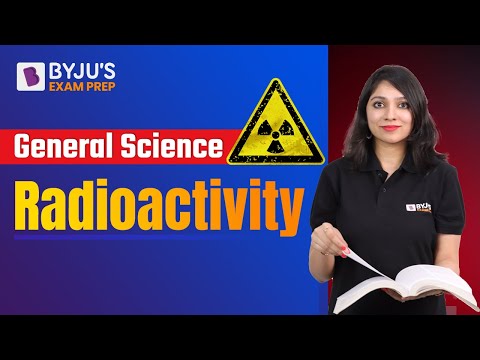In our day-to-day life, we come across the usage of stones, bricks, soils and water. These materials are essential to daily needs of mankind. However, along with their outstanding uses and properties, some threats are also introduced into our environment merely by the usage of these materials. The groundwater, soil and rocks naturally contain some radioactive substances like Uranium and Thorium.
|
Definition: Radon is a naturally occurring radioactive noble gas. It is a non-perceptible, odourless and colourless gas. |
Radon Questions with Solutions
Q1: What is the human-friendly use of Radon?
Answer: Though the direct contact with the gas is hazardous to humans, the Radon gas is used for the in-situ treatment of tumour cells. Radon is a radioactive gas and hence it decomposes into the element polonium and alpha particles. Thus, Radon is also used in cancer therapy.
Q2. Is air heavier than Radon?
Answer: Yes, Radon is 7.5 times heavier than air.
Q3. Is Radon flammable?
Answer: Radon is a noble gas. It is neither reactive nor explosive in nature.
Q4. What is the half-life period of Radon?
Answer: The half-life period of Radon is 3.8 days.
Q5. What happens when you come in contact with radon?
Answer: If by any chance, one breathes in radon, the radon will travel to his lungs lining where it will release radiation. If continued for a long time, radon can also increase the risk of lungs cancer. Lung’s cancer is most commonly caused due to radon after cigarettes.
Q6. What is Radon-poisoning? Give the first signs of radon poisoning.
Answer: Radon poisoning is the consequence of the exposure to Radon for a long duration of time which may even lead to some harmful physical changes in the body.
A persistent cough may be a sign of radon poisoning.
Q7. How can radon be eliminated?
Answer: Radon can be eliminated by active sub slab suctioning. This is the most used and reliable method for the elimination of radon. In this, the suction pipes are inserted into the soil or rocks from the ground from where the high amount of the harmful radon gas is sucked out into the environment where this gas is easily diluted.
Q8. Where does the Radon gas settle down once it is released into the air?
Answer: Due to having a short half-life (3.8 days), Radon readily decays into another radioactive element polonium and some alpha particles. These radioactive particles if inhaled enter the lining of lungs and create cancerous cells if they remain there for long durations.
Q9. How is Radon gas formed?
Answer: Radon is manufactured from the natural decaying process of uranium, a radioactive element which is found in the earth’s surface, rocks, soil and so on. Radon can either mix with water and enter our homes with the supply of groundwater or it may escape into air where it further breaks down into polonium due to atmospheric pressure and temperature.
Q10. Which material can absorb Radon?
Answer: Activated carbon or charcoal absorbs radon from the air.
Q11. Write the names of two methods used for removal of radon from the water supply of your home.
Answer: The two methods are namely:
- Point-to use method: This method deals with only a small quantity of water. This involved the treatment of radon at the tap. However, this method does not decrease the risk of radon that enters the home from other ground water sources, such as from the garden and other uses.
- Point-to-entry: It involves the treatment of water before it enters the house. This is the more effective method of removing the radon gas and protecting homes.
Q12. What levels of radon must be maintained in our surroundings to ensure no health hazards?
Answer: A level below 4 picocuries per litre (pCi/L) must be maintained in our houses and buildings to prevent the ill-effects of consuming radon.
Q13. Why is Radon gas unstable?
Answer: Radon is a radioactive noble gas, hence, it is chemically non-reactive in nature. However, it breaks down into the more radioactive element polonium and releases some alpha rays. The most stable isotope of Radon i.e. Radon-222 or 222Rn has a half-life of 3.8 days.
Q14. How often must the levels of Radon be checked in our houses?
Answer: The Environmental Protection Agency (EPA) recommends testing homes after every two years regardless of the installed mitigation system in the houses.
Q15. What are the 5 less known facts about Radon?
Answer: The five less known facts about Radon are given as:
(a.) Radon can build up in any building, home or office.
(b.) Radon is chemically inactive. It reacts with other chemical species only at extreme conditions.
(c.) Radon is mostly found in soils and rocks. Due to this reason, burning of coal and other fossil fuels also releases Radon.
(d.) Radon is not explosive in nature.
(e.) Radon is the heaviest gas with a density of 9.73 g L-1.
Practise Questions on Radon
Q1. What is a Radon hotline?
Q2. Describe Radon’s epidemiological studies.
Q3. Should the people working in Granite countertops or any other mining fields be concerned about Radon affecting them?
Q4. Radon is a carcinogenic gas. Why is Radon emitted out in the atmosphere once it has been sucked in from within the house?
Q5. Which element or compound breaks down into Radon?
Click the PDF to check the answers for Practice Questions.
Download PDF
Recommended Videos
Nuclei and Radioactivity

Radioactivity
